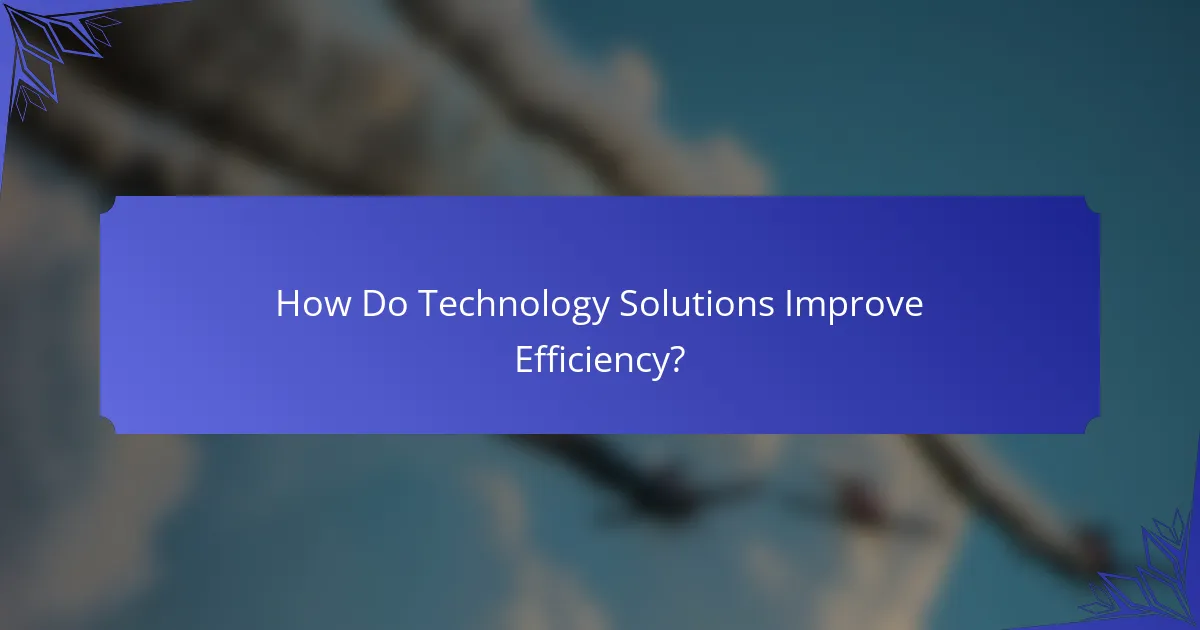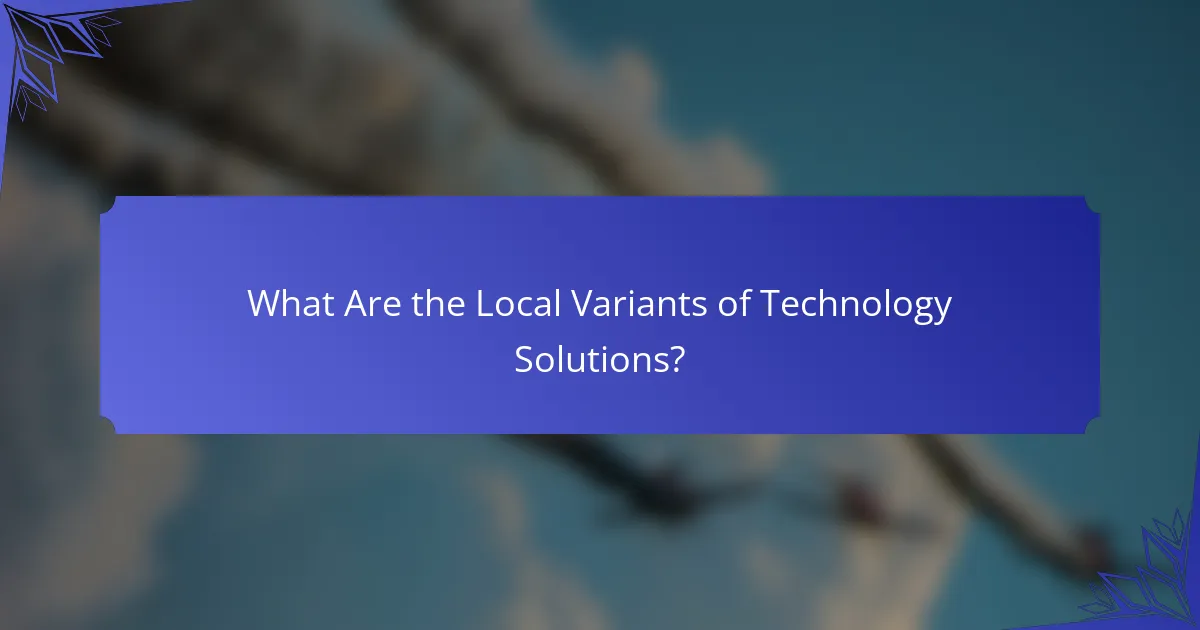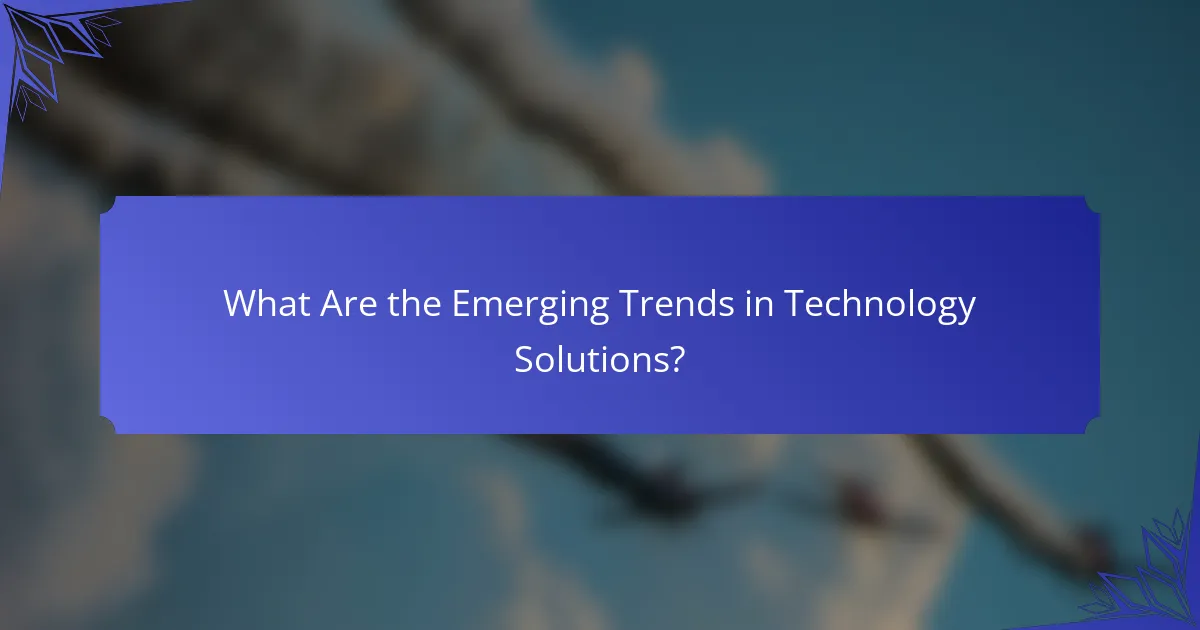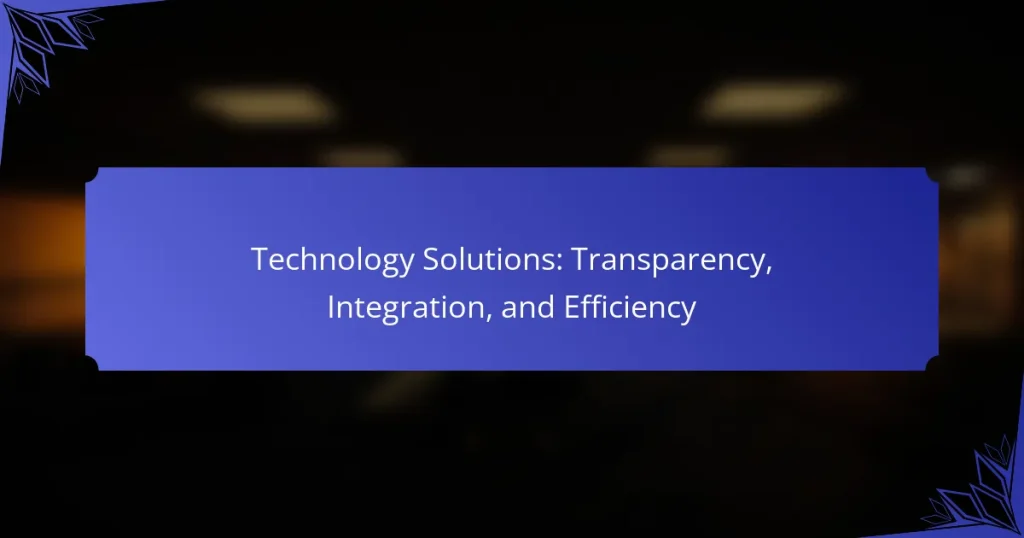Technology solutions play a crucial role in enhancing transparency, integration, and efficiency within organizations. By providing real-time visibility into processes and data flows, these solutions foster accountability and informed decision-making. Additionally, various integration options, such as API and cloud-based systems, can streamline operations and significantly boost productivity while reducing manual tasks.

How Do Technology Solutions Enhance Transparency?
Technology solutions enhance transparency by providing clear visibility into processes and data flows. They enable stakeholders to access information in real-time, ensuring that operations are open and accountable.
Real-time data access
Real-time data access allows organizations to monitor operations continuously, facilitating informed decision-making. By utilizing dashboards and analytics tools, businesses can visualize key performance indicators (KPIs) and track progress instantly.
For example, a retail company can use point-of-sale systems to gather sales data as it happens, enabling quick adjustments to inventory or marketing strategies. This immediacy helps in identifying trends and responding to customer needs effectively.
Audit trails and accountability
Audit trails create a chronological record of all transactions and changes within a system, enhancing accountability. This feature ensures that any action taken can be traced back to the responsible party, fostering a culture of responsibility.
Organizations can implement audit logs in their financial systems to track who approved expenditures or made changes to budgets. This transparency mitigates risks of fraud and promotes ethical behavior among employees.
Compliance with regulations
Compliance with regulations is crucial for maintaining transparency in operations. Technology solutions can automate compliance checks, ensuring that organizations adhere to industry standards and legal requirements.
For instance, financial institutions often use software to comply with regulations like the Anti-Money Laundering (AML) laws, which require detailed record-keeping and reporting. By automating these processes, companies not only reduce the risk of non-compliance but also enhance their transparency with regulators and stakeholders.

What Integration Options Are Available for Businesses?
Businesses can choose from various integration options to enhance their operations, including API integrations, cloud-based solutions, and Enterprise Resource Planning (ERP) systems. Each option offers unique benefits and considerations that can significantly impact efficiency and transparency.
API integrations
API integrations allow different software applications to communicate and share data seamlessly. By using application programming interfaces, businesses can automate workflows and improve data accuracy across systems.
When considering API integrations, evaluate the compatibility of your existing systems and the potential for scalability. It’s essential to ensure that the APIs are well-documented and supported to avoid future complications.
Cloud-based solutions
Cloud-based solutions provide businesses with flexible access to software and data over the internet, eliminating the need for extensive on-premises infrastructure. This model supports remote work and collaboration, making it easier to integrate various tools and services.
When implementing cloud solutions, consider factors such as data security, compliance with regulations, and the total cost of ownership. Many providers offer tiered pricing, so assess your needs to choose the most cost-effective plan.
Enterprise Resource Planning (ERP) systems
ERP systems integrate core business processes into a unified system, facilitating real-time data sharing and decision-making. These systems can streamline operations across finance, HR, supply chain, and more.
Choosing an ERP system requires careful consideration of your business size and industry requirements. Look for customizable solutions that can grow with your business and ensure that user training is part of the implementation process to maximize efficiency.

How Do Technology Solutions Improve Efficiency?
Technology solutions enhance efficiency by streamlining operations, reducing manual tasks, and enabling faster decision-making. By integrating automation, optimizing resources, and leveraging data analytics, organizations can achieve significant improvements in productivity and cost-effectiveness.
Automation of processes
Automation of processes involves using technology to perform repetitive tasks without human intervention. This can lead to faster execution of tasks, reduced errors, and lower labor costs. For example, automating invoice processing can cut down processing time from days to mere hours.
When implementing automation, consider the initial setup costs and the potential need for staff training. It’s crucial to identify which processes are most suitable for automation, such as data entry or inventory management, to maximize benefits.
Resource optimization
Resource optimization focuses on making the best use of available resources, including time, personnel, and materials. Technology solutions can help track resource usage and identify inefficiencies. For instance, using software to monitor energy consumption can lead to significant cost savings on utility bills.
To optimize resources effectively, regularly review usage patterns and adjust strategies accordingly. Avoid over-allocating resources to any single area, as this can lead to bottlenecks and decreased overall efficiency.
Data analytics for decision-making
Data analytics enables organizations to make informed decisions based on insights derived from data. By analyzing trends and patterns, businesses can identify opportunities for improvement and respond proactively to market changes. For example, sales data analysis can help tailor marketing strategies to better target customers.
When utilizing data analytics, ensure that the data collected is relevant and accurate. Implementing a robust data governance framework can help maintain data quality and security, which is essential for effective decision-making. Regularly update analytics tools to keep pace with evolving business needs.

What Are the Key Criteria for Choosing Technology Solutions?
When selecting technology solutions, key criteria include scalability, cost-effectiveness, and user-friendliness. These factors ensure that the chosen technology meets current needs while being adaptable for future growth and easy for users to navigate.
Scalability
Scalability refers to the ability of a technology solution to handle increased loads without compromising performance. When evaluating options, consider whether the solution can grow with your business, accommodating more users or data as needed.
Look for systems that offer flexible pricing models, such as pay-as-you-go or tiered subscriptions, which can help manage costs as your needs expand. A scalable solution should also integrate seamlessly with existing tools to support growth without requiring a complete overhaul.
Cost-effectiveness
Cost-effectiveness measures the value a technology solution provides relative to its price. Assess both upfront costs and ongoing expenses, including maintenance, support, and any additional features that may incur extra charges.
To determine cost-effectiveness, compare similar solutions based on features and performance. A solution that appears cheaper initially might lead to higher long-term costs if it lacks essential capabilities or requires frequent upgrades.
User-friendliness
User-friendliness is crucial for ensuring that employees can efficiently adopt and utilize the technology. A solution should have an intuitive interface, clear documentation, and accessible customer support to facilitate a smooth transition.
Consider conducting user testing or seeking feedback from potential users before finalizing your choice. A user-friendly technology solution can reduce training time and increase productivity, ultimately leading to a better return on investment.

What Are the Local Variants of Technology Solutions?
Local variants of technology solutions refer to adaptations or modifications of technology systems that cater to specific regional needs, regulations, and market dynamics. These solutions often incorporate local compliance, service providers, and features that enhance their effectiveness in a particular area.
Regional compliance requirements
Each region has distinct compliance requirements that technology solutions must meet to operate legally and effectively. For example, the General Data Protection Regulation (GDPR) in Europe mandates strict data privacy measures, while the Health Insurance Portability and Accountability Act (HIPAA) in the United States imposes specific standards for handling health information.
When implementing technology solutions, businesses should conduct thorough assessments of local regulations to ensure compliance. Failing to adhere to these requirements can result in significant fines and operational setbacks.
Local service providers
Local service providers play a crucial role in delivering technology solutions tailored to regional needs. These providers often have a better understanding of the local market, culture, and customer preferences, which enables them to offer more relevant services.
Choosing a local provider can enhance support and integration, as they are typically more accessible for troubleshooting and maintenance. Companies should evaluate potential providers based on their expertise, reputation, and ability to meet specific local requirements.
Market-specific features
Market-specific features are functionalities tailored to address the unique demands of a particular region. For instance, payment solutions in Europe may need to support multiple currencies and local payment methods like SEPA, while solutions in Asia might focus on mobile payment integration.
When selecting technology solutions, businesses should prioritize features that resonate with their target audience. Conducting market research can help identify essential functionalities that enhance user experience and drive adoption.

What Are the Emerging Trends in Technology Solutions?
Emerging trends in technology solutions focus on enhancing transparency, integration, and efficiency across various sectors. Key developments include the integration of artificial intelligence, the use of blockchain for improved transparency, and the rise of remote work technologies.
Artificial Intelligence integration
Artificial intelligence (AI) integration involves incorporating AI technologies into existing systems to enhance functionality and decision-making. Businesses can leverage AI for data analysis, customer service automation, and predictive analytics, leading to increased efficiency and reduced operational costs.
When integrating AI, consider the specific needs of your organization and the potential return on investment. Start with pilot projects to assess effectiveness before scaling. Common pitfalls include underestimating the complexity of AI systems and neglecting employee training.
Blockchain for transparency
Blockchain technology offers a decentralized and secure method for recording transactions, enhancing transparency across various industries. By using blockchain, organizations can provide verifiable records that are tamper-proof, which is particularly valuable in sectors like finance, supply chain, and healthcare.
To implement blockchain effectively, identify processes that require transparency and trust. Consider the costs associated with blockchain development and maintenance, as well as regulatory compliance. A successful example is the use of blockchain in supply chains to track product origins and ensure authenticity.
Remote work technologies
Remote work technologies facilitate collaboration and communication among distributed teams. Tools such as video conferencing, project management software, and cloud storage are essential for maintaining productivity outside traditional office settings.
When adopting remote work technologies, prioritize user-friendly platforms that integrate well with existing systems. Ensure robust cybersecurity measures are in place to protect sensitive data. Regularly solicit feedback from employees to optimize tool usage and address any challenges they face while working remotely.


